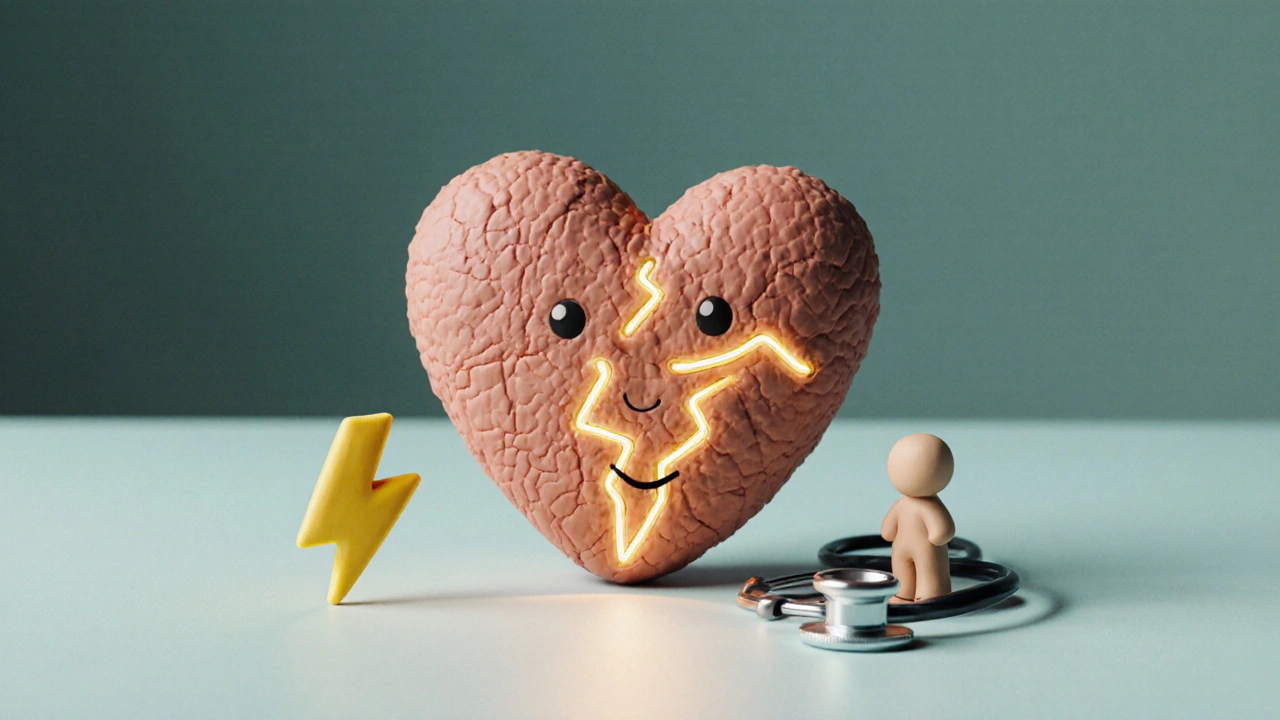
How to Reduce Your Risk of an Irregular Heartbeat
Learn practical steps to lower your risk of an irregular heartbeat. Focus on diet, exercise, stress, sleep, and substance habits to keep your heart rhythm steady.
When dealing with irregular heartbeat, an abnormal heart rhythm that can range from occasional skips to rapid, chaotic beats. Also known as arrhythmia, it often signals underlying cardiac issues that need attention. One common form is atrial fibrillation, a fast, irregular rhythm originating in the heart's upper chambers, while ventricular tachycardia, a dangerous rapid rhythm from the lower chambers poses a higher emergency risk. Many people first notice it with a fluttering feeling, shortness of breath, or unexplained fatigue. Understanding the triggers, how to spot warning signs, and what tools can help you stay on top of your heart health is the first step toward control.
Irregular heartbeat often emerges when the heart's electrical system goes off‑track. Age, high blood pressure, diabetes, and lifestyle habits like excessive caffeine or alcohol can all tip the balance. Genetic factors also play a role; families with a history of arrhythmias may inherit subtle conduction abnormalities. For athletes, intense training sometimes leads to benign “sports heart” rhythm changes, while older adults are more prone to serious types like atrial fibrillation. The condition can be fleeting, like occasional premature beats, or chronic, demanding ongoing management.
Diagnosing an irregular heartbeat usually starts with a simple pulse check, but clinicians often rely on an electrocardiogram (ECG), a test that records the heart's electrical activity or a wearable heart rate monitor, a device that tracks rhythm in real time. These tools help differentiate between harmless extra beats and patterns that need medical intervention. When an ECG shows irregular QRS complexes or erratic P‑waves, doctors can pinpoint whether the problem lies in the atria, ventricles, or the conduction pathways.
Once identified, treatment depends on the type and severity. Minor palpitations might be managed with lifestyle tweaks—cutting back on stimulants, improving sleep, and staying hydrated. More persistent arrhythmias often require medication such as beta‑blockers, calcium channel blockers, or anti‑arrhythmic drugs that stabilize the heart's electrical flow. In cases like atrial fibrillation, doctors may recommend anticoagulants to lower stroke risk, because an irregular rhythm can cause blood clots to form in the atria.
Procedural options exist for those who don’t respond to medication. Catheter ablation, where a specialist uses radiofrequency energy to scar problematic tissue, can cure many forms of atrial fibrillation and some ventricular tachycardias. Implantable devices—pacemakers or implantable cardioverter‑defibrillators (ICDs)—monitor heart rhythm continuously and deliver shocks or pacing when a dangerous pattern arises, essentially acting as an internal safety net.
Living with an irregular heartbeat also means staying proactive about monitoring. Modern smartwatches and dedicated cardiac patches can alert you to irregularities before they become emergencies. Regular follow‑up appointments, blood pressure checks, and staying active within safe limits help keep the rhythm stable. Importantly, understanding your personal triggers—whether it’s stress, certain medications, or electrolyte imbalances—lets you adjust daily habits before the heart misbehaves.
All this information may feel overwhelming, but the good news is that most irregular heartbeats are manageable with the right mix of awareness, lifestyle changes, and medical care. Below you’ll find a curated collection of articles that dive deeper into specific medications, diagnostic tools, and treatment strategies, giving you practical steps to take control of your heart health today.

Learn practical steps to lower your risk of an irregular heartbeat. Focus on diet, exercise, stress, sleep, and substance habits to keep your heart rhythm steady.